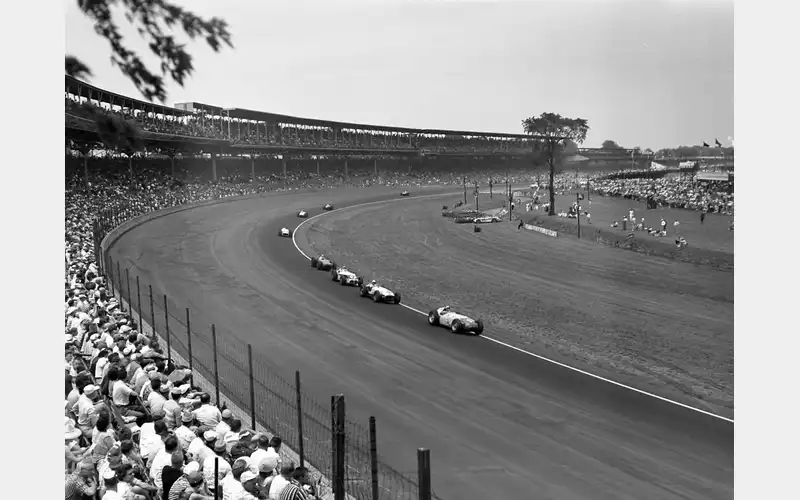
On January 31, 1956, the Indianapolis Motor Speedway announced a major breakthrough in the world of motorsports — the introduction of new safety measures that would forever change the landscape of racing. This announcement, made in the heart of winter, set the stage for a safer and more thrilling Indianapolis 500 that year.
The 1956 Indianapolis 500 was not just another race; it was a pivotal moment that highlighted the growing importance of driver safety in auto racing. The Speedway’s management introduced a revolutionary innovation: the installation of safer barriers around the track. These barriers were designed to absorb the impact of crashes, reducing the risk of severe injuries to drivers. This decision came after years of increasing speeds and more powerful cars, which had made the need for enhanced safety measures more urgent than ever.
The 1956 race saw the participation of some of the greatest names in racing history, each eager to take advantage of the improved safety features. The event was a spectacle of speed and skill, with drivers pushing their machines to the limits on the newly fortified track. As fans watched from the grandstands, the roar of engines and the thrill of competition underscored the importance of these safety advancements.
Pat Flaherty emerged victorious, claiming his first and only win at the Indy 500. His triumph was a testament not only to his driving prowess but also to the enhanced safety features that allowed drivers to compete with greater confidence. Flaherty’s victory lap was a celebration of progress, a nod to the future of racing where safety and speed could coexist.
The changes made in 1956 laid the groundwork for future innovations in motorsport safety, influencing not only the Indianapolis 500 but the entire racing industry. The announcement on that cold January day was more than just a news release; it was a commitment to the well-being of drivers and a promise of thrilling races for decades to come.





















